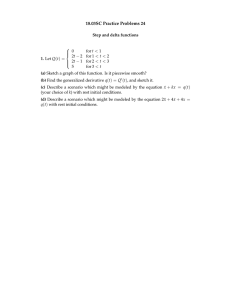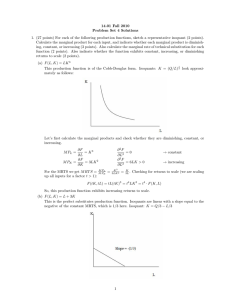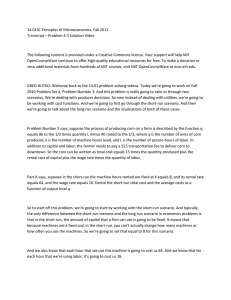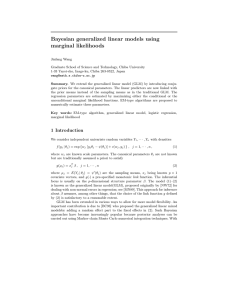14.01 Fall 2010 Problem Set 4
advertisement
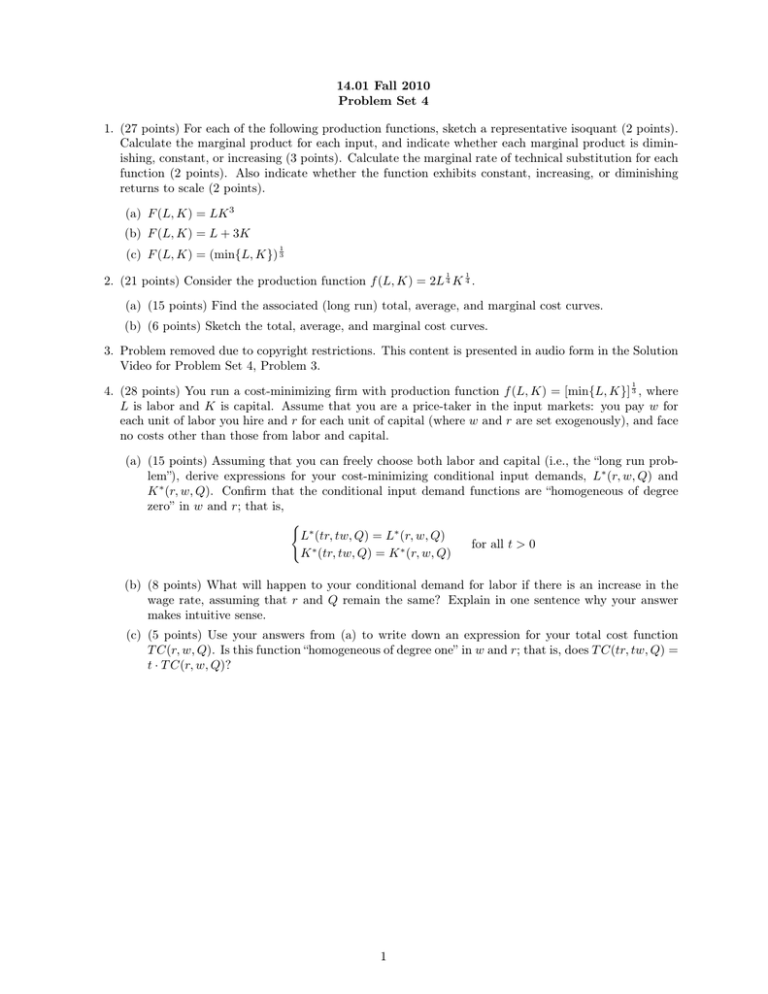
14.01 Fall 2010
Problem Set 4
1. (27 points) For each of the following production functions, sketch a representative isoquant (2 points).
Calculate the marginal product for each input, and indicate whether each marginal product is dimin­
ishing, constant, or increasing (3 points). Calculate the marginal rate of technical substitution for each
function (2 points). Also indicate whether the function exhibits constant, increasing, or diminishing
returns to scale (2 points).
(a) F (L, K) = LK 3
(b) F (L, K) = L + 3K
1
(c) F (L, K) = (min{L, K}) 3
1
1
2. (21 points) Consider the production function f (L, K) = 2L 4 K 4 .
(a) (15 points) Find the associated (long run) total, average, and marginal cost curves.
(b) (6 points) Sketch the total, average, and marginal cost curves.
3. Problem removed due to copyright restrictions. This content is presented in audio form in the Solution
Video for Problem Set 4, Problem 3.
1
4. (28 points) You run a cost-minimizing firm with production function f (L, K) = [min{L, K}] 3 , where
L is labor and K is capital. Assume that you are a price-taker in the input markets: you pay w for
each unit of labor you hire and r for each unit of capital (where w and r are set exogenously), and face
no costs other than those from labor and capital.
(a) (15 points) Assuming that you can freely choose both labor and capital (i.e., the “long run prob­
lem”), derive expressions for your cost-minimizing conditional input demands, L∗ (r, w, Q) and
K ∗ (r, w, Q). Confirm that the conditional input demand functions are “homogeneous of degree
zero” in w and r; that is,
�
L∗ (tr, tw, Q) = L∗ (r, w, Q)
for all t > 0
K ∗ (tr, tw, Q) = K ∗ (r, w, Q)
(b) (8 points) What will happen to your conditional demand for labor if there is an increase in the
wage rate, assuming that r and Q remain the same? Explain in one sentence why your answer
makes intuitive sense.
(c) (5 points) Use your answers from (a) to write down an expression for your total cost function
T C(r, w, Q). Is this function “homogeneous of degree one” in w and r; that is, does T C(tr, tw, Q) =
t · T C(r, w, Q)?
1
MIT OpenCourseWare
http://ocw.mit.edu
14.01SC Principles of Microeconomics
Fall 2011
For information about citing these materials or our Terms of Use, visit: http://ocw.mit.edu/terms.
